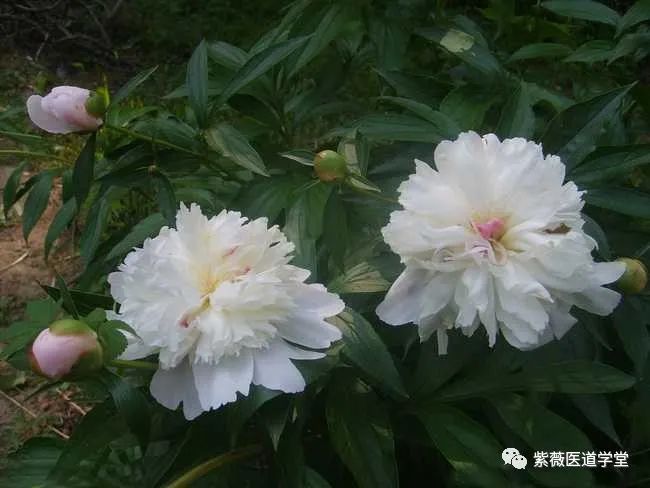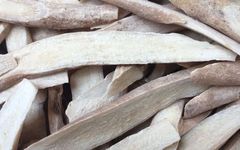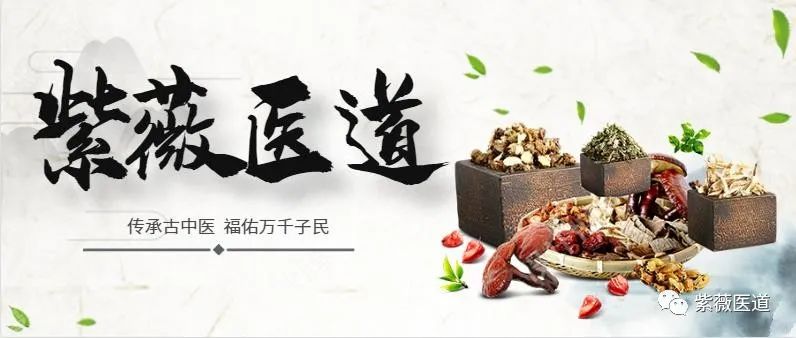
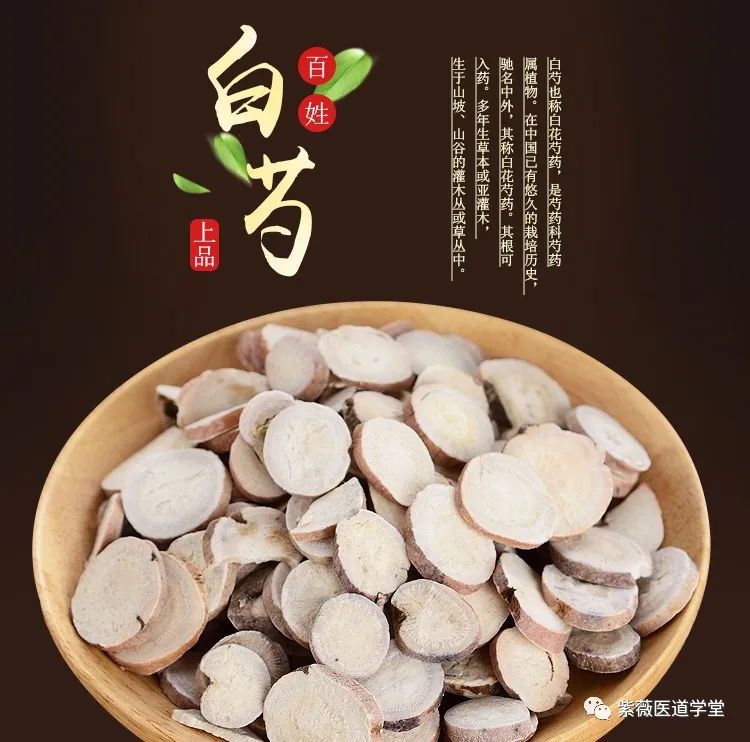
1
Bai Shao (白芍), nourishes blood for heat deficiency, drains liver fire for excess, reduces deficiency heat, alleviates symptoms caused by heat-related three consumptions, can stop abdominal pain due to blood deficiency, restrain fever from blood deficiency, and calm fetal restlessness due to heat.
2
Bai Shao is a key herb for stopping abdominal pain.
Used with Gan Cao (甘草) to stop qi deficiency abdominal pain, with Chuan Xiong (川芎) and Dang Gui (当归) to stop blood deficiency abdominal pain, with Shan Zha (山楂) and Hou Po (厚朴) to stop stagnation abdominal pain, with Sha Ren (砂仁) to stop abdominal pain during pregnancy, with Huang Qin (黄芩) and Huang Lian (黄连) to stop heat dysentery abdominal pain, with Gan Jiang (干姜), Fu Zi (附子), and Rou Gui (肉桂) to stop cold abdominal pain.
3
For dysentery abdominal pain, Bai Shao and Gan Cao are the main herbs, with Dang Gui and Bai Zhu (白术) as assistants; for cold pain, add Gui Zhi (桂枝); for heat pain, add Huang Bai (黄柏).
Additionally, Bai Shao wine-soaked and stir-fried, used with Bai Zhu, can tonify the spleen; with Chuan Xiong, it can drain the liver; with Ren Shen (人参) and Bai Zhu, it can tonify qi.
For abdominal pain with diarrhea, it must be stir-fried; for post-heavy symptoms, do not stir-fry.
4
Bai Shao combined with Ren Shen tonifies qi, with Dang Gui tonifies blood, with Huang Lian stops diarrhea, with Gan Cao treats thirst and promotes fluid intake, with Huang Qi (黄芪) treats night sweats, and with Sheng Di (生地) treats blood loss.
5
When Bai Shao is used with Dang Gui and Di Huang (地黄), it generates new blood; with Tao Ren (桃仁) and Hong Hua (红花), it resolves blood stasis; with Gan Cao, it harmonizes qi and blood, effectively treating abdominal pain; with Zhu Ru (竹茹), it effectively stops vomiting and nosebleeds; with Fu Zi and Gan Jiang, it gathers the original yang and returns to the root.
It is also said that when used with Gan Cao, it becomes a yin-nourishing herb; with Sheng Jiang (生姜), Da Zao (大枣), and Gui Zhi, it becomes a harmonizing herb; with Fu Zi and Gan Jiang, it can gather the original yang and return to the yin, also serving as a kidney-nourishing herb.
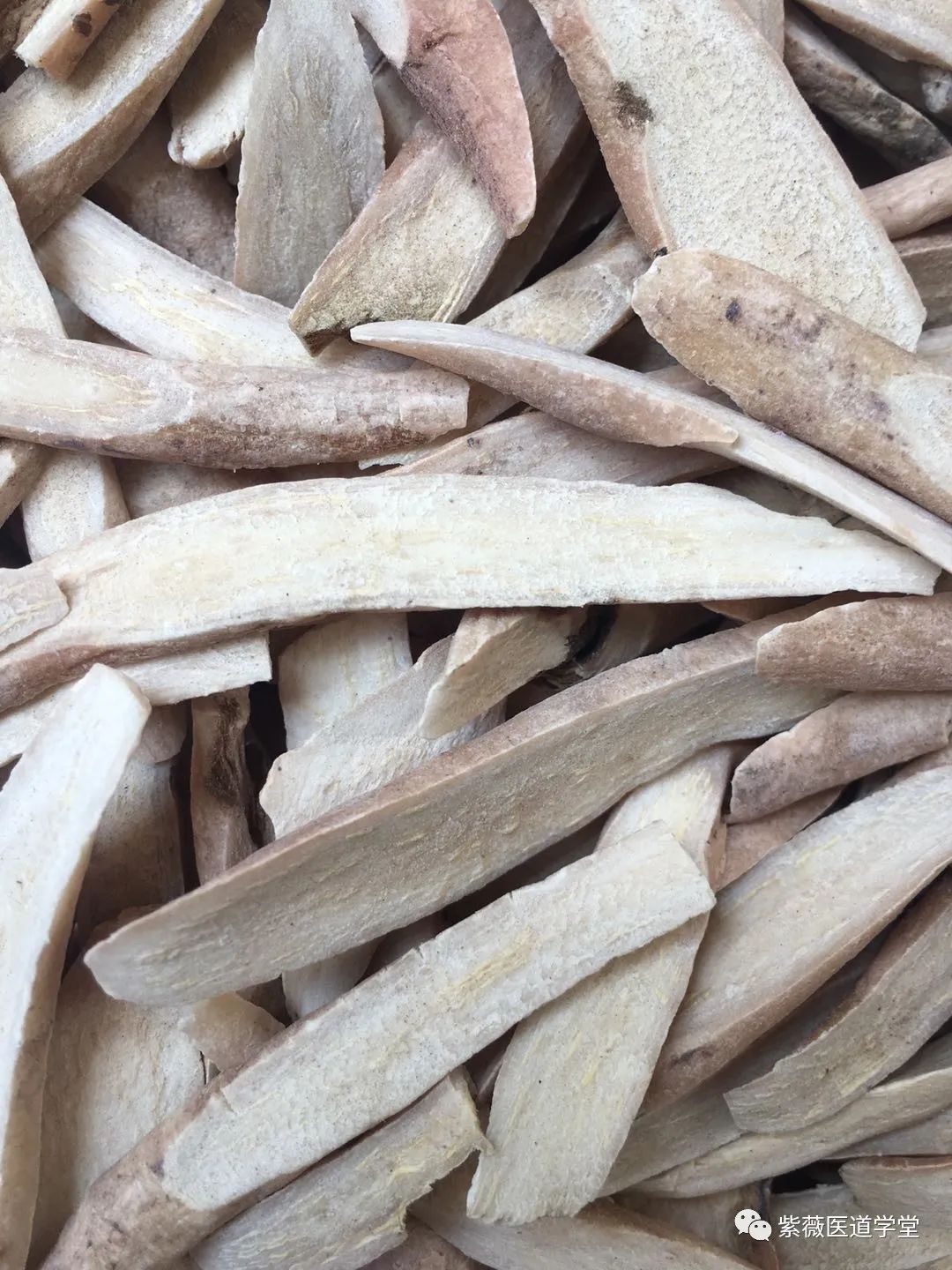
6
Bai Shao combined with diuretic herbs promotes urination, and with blood-moving herbs, it promotes blood flow.
It is said that Bai Shao’s nature is good at guiding the power of other herbs to the bladder.
7
Bai Shao combined with Gui Zhi restrains wind and sweating, and with Huang Qi and Ren Shen restrains spontaneous sweating.
8
Bai Shao benefits the spleen, can drain wood from the earth; Chi Shao (赤芍) disperses evil, can move stagnation in the blood.
It is said that Bai Shao has a sweet and nourishing nature, while Chi Shao has a bitter and draining nature.
9
Shu Di (熟地) and Bai Shao can both nourish blood, but Shu Di primarily nourishes blood by entering the kidneys to generate essence, while Bai Shao nourishes blood by entering the liver to nourish yin.
10
Bai Shao alone, as noted in the “Shen Nong Ben Cao Jing”, is said to have a bitter taste and neutral nature, while the “Ming Yi Bie Lu” states it has a sour taste and slightly cold nature, leading to a debate between Bai Shao’s “bitter and neutral draining” and “sour and cold restraining” properties.
In fact, the “Ming Yi Bie Lu” adds that Bai Shao’s “sour and cold” nature complements the deficiencies of the “Shen Nong Ben Cao Jing”, and combining both can generally summarize Bai Shao’s ability to restrain and drain, to move and to settle, to rise and to descend.
11
In the “Shang Han Lun”, Bai Shao is used primarily for its leading function of “moving” to exert its various medicinal effects.
For example, in Gui Zhi Tang (桂枝汤), it “smooths the nutritive qi”; in Si Ni San (四逆散), it “regulates liver qi”; in Ma Zi Ren Wan (麻子仁丸), it “promotes bowel movement”; in Zhen Wu Tang (真武汤), it “facilitates water pathways”; in Dang Gui Si Ni San (当归四逆散), it “unblocks and moves stagnation”.
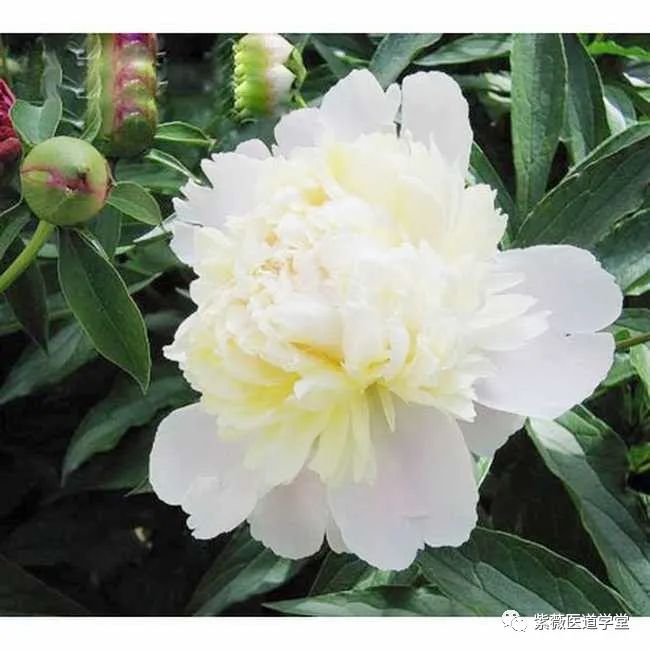
12
Bai Shao “benefits qi”, as explicitly stated in the “Shen Nong Ben Cao Jing”.
The “Jing Shi Zheng Lei Bei Ji Ben Cao” records that taking Bai Shao for 300 days can “climb mountains and cross valleys without hunger”.
In the 1980s, a beverage factory was established in Guangzhou using Bai Shao as the main ingredient. A study from Anhui Medical University indicated that Bai Shao’s pharmacological effects are comparable to those of Ren Shen.
Researchers conducted a comparative study of 27 pharmacological effects between these two herbs, finding that they had equivalent effects in 17 cases, Bai Shao was inferior in 3 cases, and superior in 7 cases.
13
Bai Shao is a widely used herb with excellent clinical effects.
For asthma patients using Xiao Qing Long Tang (小青龙汤) or other lung-soothing formulas, the addition of Bai Shao can enhance its efficacy in relieving asthma. This is because Bai Shao softens the liver, enhancing the liver’s ability to disperse, thus assisting in lung-soothing and achieving asthma relief.
For patients with deficiency asthma, when using qi-tonifying lung formulas, adding Bai Shao, which nourishes blood and softens the liver, can also improve efficacy.
For treating ulcer disease, Xiao Jian Zhong Tang (小建中汤) is a good formula, and to enhance its efficacy, Bai Shao should be used in larger doses, even up to 60 grams or 90 grams.
For patients with esophageal, gastric, and intestinal spasms, as well as allergic colitis, Bai Shao can be used in combination with Bai Zhu, Xiang Fu (香附), and Mu Xiang (木香) for good results.
For patients with coronary heart disease and myocarditis, Bai Shao can be combined with Dan Shen (丹参), Dang Shen (党参), and Mai Dong (麦冬) to enhance the effects of nourishing the heart, invigorating blood, and tonifying qi.
For treating gastrocnemius muscle spasms or other muscle spasms, Bai Shao Gan Cao Tang (白芍甘草汤) can be used in larger doses, and if combined with Di Long (地龙) and Quan Xie (全蝎) for wind-dispelling effects, the results will be even better.
For conditions such as migraines, menstrual pain, and postoperative pain, Bai Shao can also be used for treatment.
If the usual dosage of Bai Shao (9-15 grams) does not yield significant results, it can be increased to 60 grams or 90 grams for better efficacy, with no adverse side effects observed.
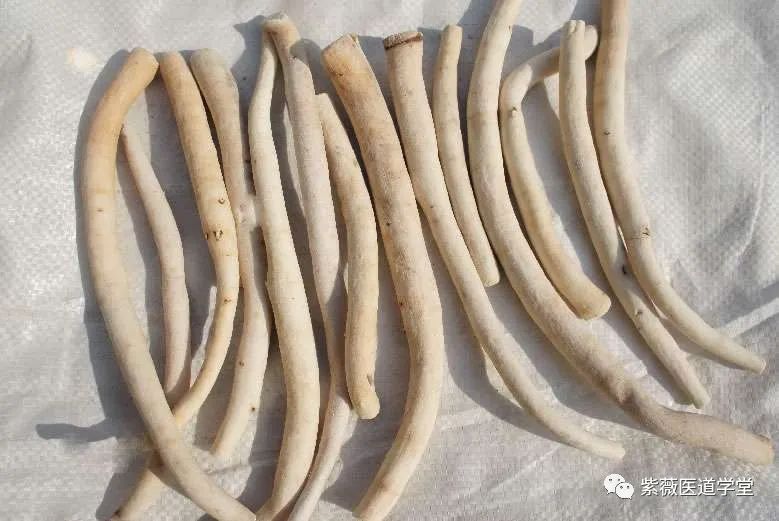
14
Bai Shao enters the liver channel, with effects of relieving spasms, alleviating urgency and pain, promoting urination, and stopping bleeding.
For treating urinary stones, based on syndrome differentiation, adding a large dose of Bai Shao can promote stone expulsion.
15
Bai Shao can alleviate urgent bleeding; when used in doses over 30 grams, it is effective for hemoptysis, hematemesis, hemoptysis, epistaxis, hematochezia, and metrorrhagia caused by urgent liver qi.
16
For hypertension and arteriosclerosis, with frequent headaches, irritability, and constipation, when the syndrome is identified as yin deficiency with yang excess and blood stasis, Bai Shao (30 grams each of Chi Shao and Bai Shao) can be decocted and consumed as tea, which has effects of lowering blood pressure and relieving headaches.
Continuous use for ten days or several months yields excellent results.
17
Bai Shao is suitable for yin deficiency with heat, urinary retention, and edema, but two points must be noted: first, it should be used raw, and second, the dosage must be large, often requiring over 60 grams.
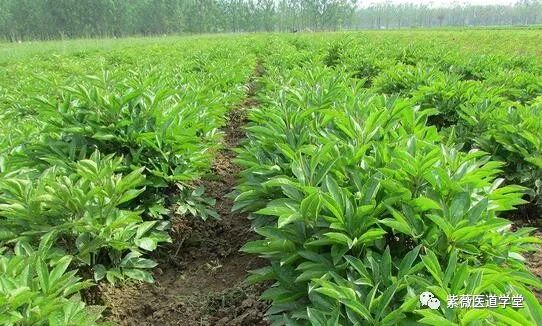
18
Bai Shao has sedative, analgesic, and smooth muscle-relaxing effects, making it essential for treating trigeminal neuralgia and bone hyperplasia, and it must be used in larger doses.
Bai Shao (30-60 grams), combined with Mu Guo (木瓜), Wei Ling Xian (威灵仙), and Guo Sui Bu (骨碎补), treats bone hyperplasia; Bai Shao (30 grams), combined with Shi Jue Ming (石决明), Mu Li (牡蛎), and Wu Gong (蜈蚣), treats trigeminal neuralgia.
19
Bai Shao has anti-allergic effects and is essential when anti-sperm antibody is positive.
20
In the “Fu Qing Zhu Nu Ke”, over 100 formulas are recorded, with Bai Shao used in more than 40 instances, aiming to pacify liver yang and stabilize yin blood.
The liver stores blood, and the body is yin while using yang; sufficient yin blood is necessary to nourish the liver. If liver yin is insufficient, it can lead to excessive liver yang, commonly seen in clinical conditions such as dizziness during menstruation, irregular menstruation, pregnancy-related dizziness and convulsions, and symptoms before and after menopause.
Throughout a woman’s life, menstruation, pregnancy, childbirth, and breastfeeding all rely on blood, thus the body often exists in a state of yin blood deficiency with excess qi.
Bai Shao has a bitter and sour taste, slightly cold nature, enters the liver and spleen channels, and functions to nourish blood, restrain yin, pacify liver yang, and alleviate urgency and pain, thus having many applications in gynecological conditions.
21
Bai Shao combined with He Ye (荷叶) can restrain yin, clear the liver, cool the blood, and stop bleeding, achieving the goal of stopping bleeding without leaving stasis and promoting new blood generation from stasis.Using 30 grams of each herb, it effectively treats blood-heat type excessive menstruation and metrorrhagia, with good hemostatic effects.
22
People with blood deficiency and cold should avoid using Bai Shao.Ancient texts suggest reducing Bai Shao to avoid coldness, which should not be overlooked.
23
Bai Shao is used raw to drain fire, stir-fried to restrain yin, wine-fried to harmonize blood, and vinegar-fried to stop bleeding.
